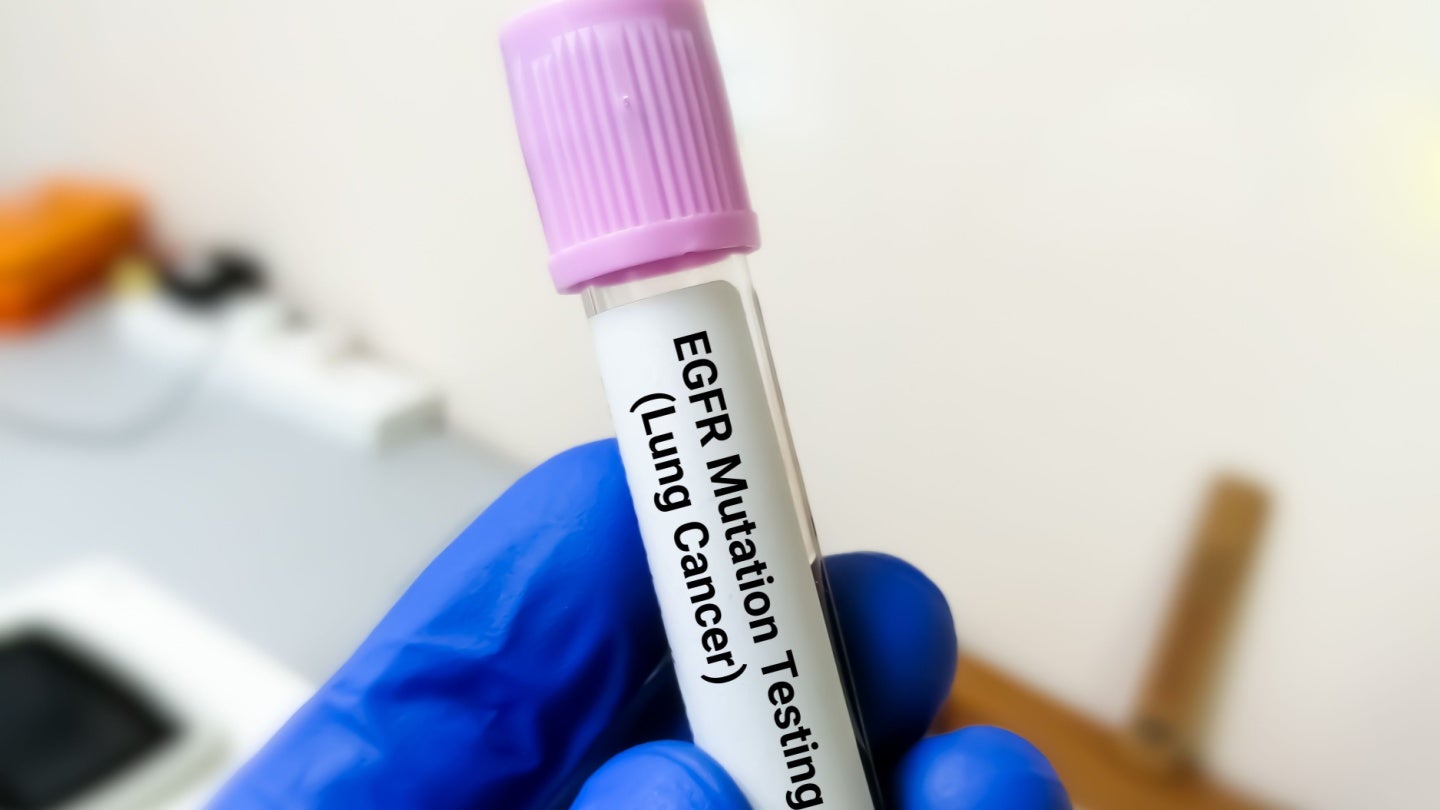Wheezing Predicts Bronchiolitis Severity, Future Asthma
In the bustling corridors of pediatric emergency departments worldwide, bronchiolitis continues to challenge clinicians with its unpredictable course and significant impact on child health. Amidst the diverse clinical presentations and outcomes, a new beacon of clarity has emerged from recent research spearheaded by Astudillo, Rodriguez-Fernandez, Castro-Rodríguez, and colleagues. Their groundbreaking study centers on wheezing at […]


In the bustling corridors of pediatric emergency departments worldwide, bronchiolitis continues to challenge clinicians with its unpredictable course and significant impact on child health. Amidst the diverse clinical presentations and outcomes, a new beacon of clarity has emerged from recent research spearheaded by Astudillo, Rodriguez-Fernandez, Castro-Rodríguez, and colleagues. Their groundbreaking study centers on wheezing at the moment of hospital admission as a pivotal marker for both the severity of bronchiolitis and the risk of subsequent asthma development. Published in Pediatric Research in 2025, this work unravels the intricate clinical tapestry underlying an ailment that remains the leading cause of infant hospitalization globally.
Bronchiolitis, an acute lower respiratory tract infection predominantly caused by viral pathogens such as respiratory syncytial virus (RSV), affects infants during a critical window of lung development. Despite its commonality, the severity of the disease varies dramatically, ranging from mild self-limiting symptoms to life-threatening respiratory failure. Traditional clinical assessments have struggled to pinpoint reliable predictors of outcome, often leaving healthcare providers navigating uncertain prognoses. This study’s innovative approach to utilizing supervised clustering based on documented clinical characteristics ushers in a promising paradigm for individualized risk stratification.
At the heart of this research lies the concept of wheezing observed on hospital admission, a clinical sign easily recognized yet insufficiently understood in the broader context of patient trajectory. Wheezing, characterized by a high-pitched, musical respiration sound arising from airway obstruction, has been paradoxically viewed both as a common symptom and a harbinger of complicated illness. The investigators posited that segregating patients by wheezing status could reveal distinct subgroups with predictable short-term outcomes and even forecast long-term respiratory consequences, such as the development of asthma during childhood.
Employing a robust dataset encompassing detailed clinical variables at admission, the team applied advanced supervised clustering algorithms, a methodological leap beyond traditional unsupervised techniques. This approach leveraged prior knowledge of clinical outcomes, enabling the grouping of patients not merely by resemblance but by outcome relevance. Consequently, they crafted stratified phenotypes that could be directly linked to prognostic implications. The granularity of these clusters, influenced heavily by the presence or absence of wheezing, highlighted the heterogeneity hidden beneath the ostensibly uniform diagnosis of bronchiolitis.
The results were illuminating. Children presenting with wheezing at admission exhibited a distinct clinical phenotype characterized by enhanced severity markers, including increased respiratory distress, higher requirement for supplemental oxygen, and prolonged hospital stays. Biologically, this subgroup’s airways appeared more reactive and inflamed, aligning with pathophysiological features that predispose individuals to chronic airway remodeling. Crucially, the researchers identified a significant correlation between wheezing on admission and subsequent asthma risk in longitudinal follow-ups, underscoring wheezing’s role as a sentinel symptom rather than a transient event.
Delving deeper, the investigators integrated immunological profiles and viral etiology to enrich their clustering framework. They observed differential immune responses—specifically variations in Th2-skewed cytokine patterns—in wheezing patients versus their non-wheezing counterparts. The heightened eosinophilic activity and elevated markers of airway inflammation in the wheezing group not only substantiated the clinical observations but also implicated immune mechanisms bridging acute bronchiolitis to chronic respiratory pathology. Meanwhile, viral diversity analyses revealed that certain viral strains, particularly those with propensity to trigger wheezing phenotypes, could influence cluster assignment and prospective outcomes.
The technological sophistication underlying this research extends beyond patient classification. By interfacing machine learning with clinical acumen, the team laid a blueprint for predictive modeling in pediatric respiratory medicine. This synergy holds the potential to revolutionize triage protocols and therapeutic decision-making, enabling clinicians to anticipate escalations in care and personalize interventions accordingly. For instance, early identification of wheezing phenotypes could prompt closer monitoring, judicious use of bronchodilators, or enrollment in early intervention programs aimed at mitigating asthma progression.
From a public health perspective, the implications of these findings are expansive. Bronchiolitis places a substantial burden on healthcare systems, with seasonal surges exacerbating resource constraints. Stratifying patients effectively allows for resource optimization and may inform vaccination or prophylaxis strategies, particularly in high-risk populations. Furthermore, the link between early wheezing and asthma development reinforces the importance of longitudinal surveillance and highlights windows for preventive measures against chronic respiratory diseases.
The study also sparks questions regarding the interplay of genetics, environment, and viral infections in shaping respiratory trajectories. While wheezing emerges as a practical and informative clinical marker, it may represent the tip of an iceberg encompassing multiple etiopathogenic layers. Ongoing investigations are essential to decode molecular signatures and epigenetic modifications associated with these phenotypes, potentially unveiling novel therapeutic targets or biomarkers.
Clinicians and researchers alike are poised to harness these insights. The integration of wheezing status into routine clinical assessment promises to refine diagnostic accuracy and improve prognostication. This could translate into tailored follow-ups, where high-risk infants receive focused attention to identify and manage early signs of asthma. Moreover, the study exemplifies the power of data-driven approaches to unravel complexity in common pediatric diseases, fostering an era where precision medicine is accessible even in emergency care settings.
In challenged healthcare environments, where rapid yet informed decisions are critical, the utility of simple clinical signs validated by rigorous data analysis cannot be overstated. As pediatric respiratory illnesses continue to pose challenges amidst evolving viral landscapes, the incorporation of wheezing-based stratification represents a tangible advancement bridging bedside observation with predictive science.
Looking ahead, it is anticipated that this research will stimulate integration of more sophisticated tools such as wearable monitoring devices and digital health platforms, enabling real-time phenotyping beyond hospital walls. The dynamic monitoring of respiratory sounds, combined with patient history and biometric data, could exponentially enhance early identification of high-risk bronchiolitis cases. Such innovation aligns with global health goals to reduce the long-term burden of asthma and improve pediatric respiratory outcomes worldwide.
In summary, Astudillo et al.’s seminal work delineates wheezing on admission not merely as a symptom but as a pivotal clinical biomarker with multifaceted implications. By coupling supervised clustering techniques with meticulous clinical evaluation, they have illuminated a path toward personalized care in bronchiolitis, bridging the gap between acute management and chronic disease prevention. The ripples from this study are expected to influence clinical guidelines, research priorities, and public health policies, heralding a new chapter in pediatric respiratory medicine.
This landmark study underscores the critical need for continued investment in integrative research methodologies, blending clinical expertise with cutting-edge computational tools. As the medical community embraces this holistic approach to complex diseases, the vision of precision pediatrics comes ever closer to reality, promising healthier futures for the youngest and most vulnerable patients.
Subject of Research: Wheezing status as a prognostic marker for bronchiolitis severity and risk of asthma development in pediatric patients.
Article Title: Wheezing on admission: a marker for bronchiolitis severity and asthma development.
Article References:
Astudillo, P., Rodriguez-Fernandez, M., Castro-Rodríguez, J.A. et al. Wheezing on admission: a marker for bronchiolitis severity and asthma development.
Pediatr Res (2025). https://doi.org/10.1038/s41390-025-04096-9
Image Credits: AI Generated
DOI: https://doi.org/10.1038/s41390-025-04096-9
Tags: acute lower respiratory tract infections in childrenbronchiolitis and asthma risk factorsclinical assessment of bronchiolitis outcomesfuture asthma development in childrenindividualized risk stratification in bronchiolitisinfant hospitalization for bronchiolitispediatric emergency department challengespredictors of respiratory failure in infantsresearch on bronchiolitis treatmentrespiratory syncytial virus impactunderstanding bronchiolitis in pediatric carewheezing as a predictor of bronchiolitis severity
What's Your Reaction?


































